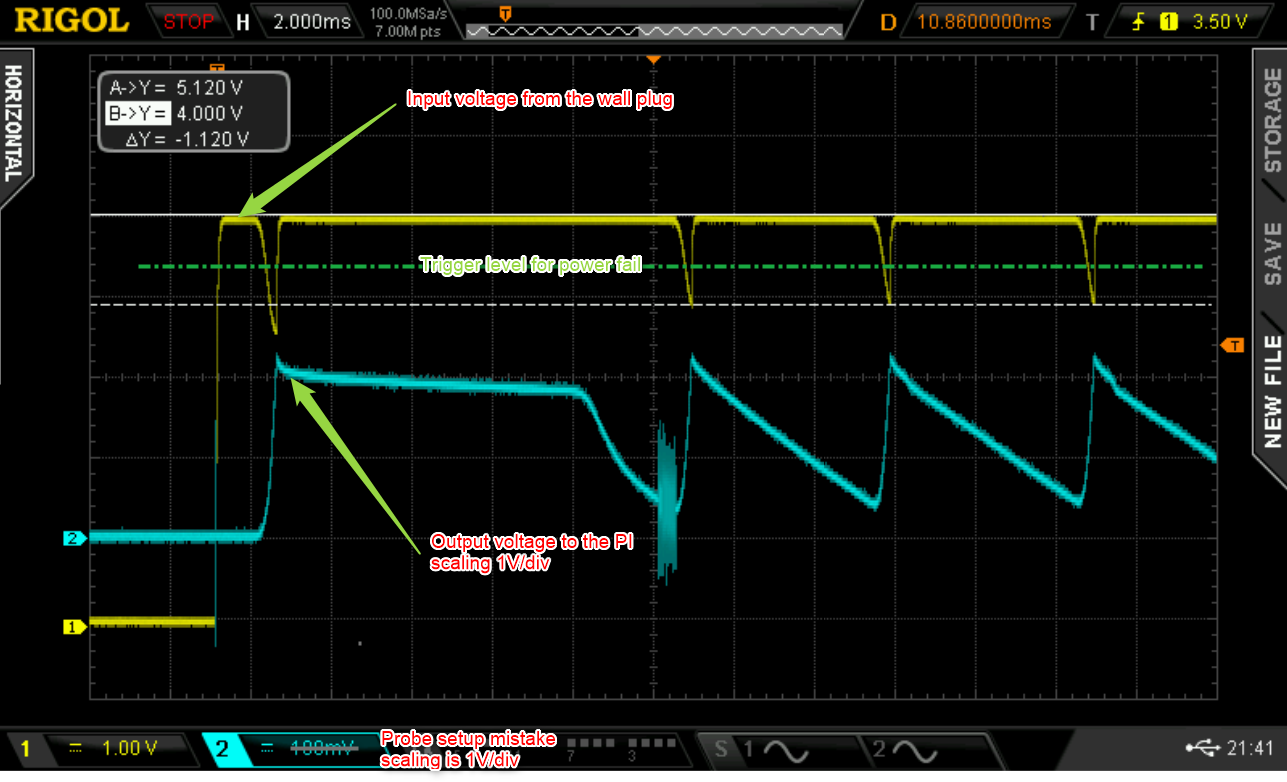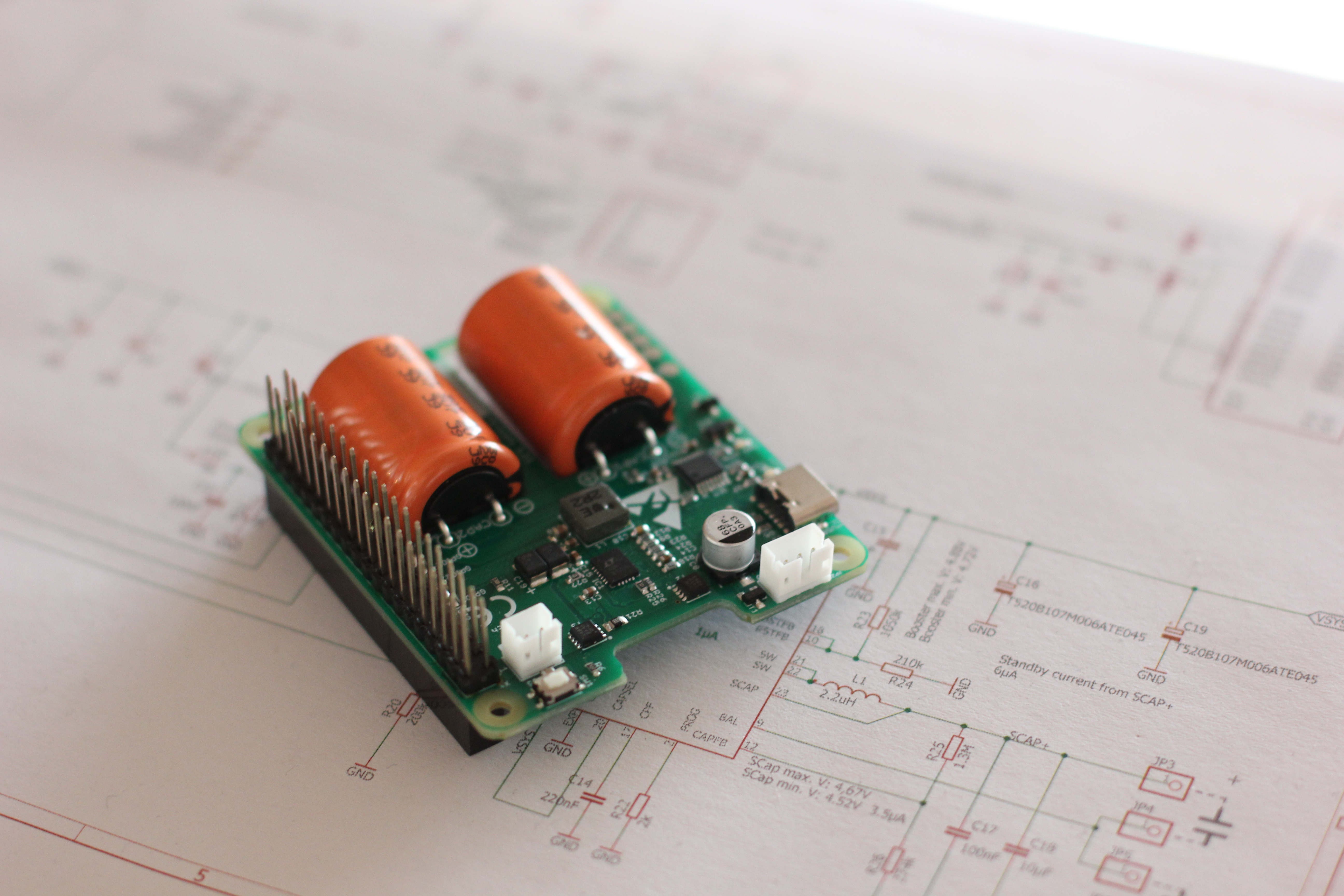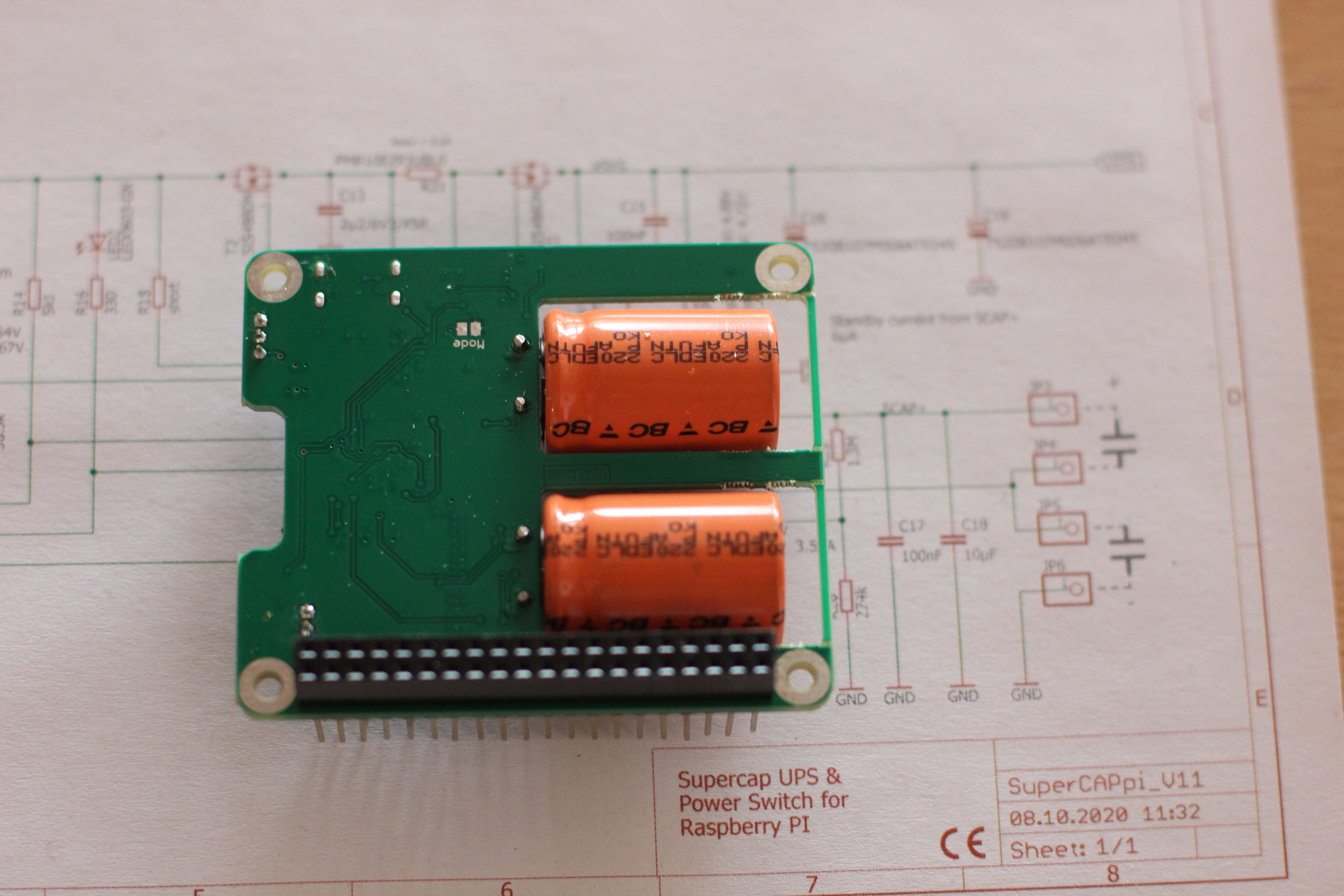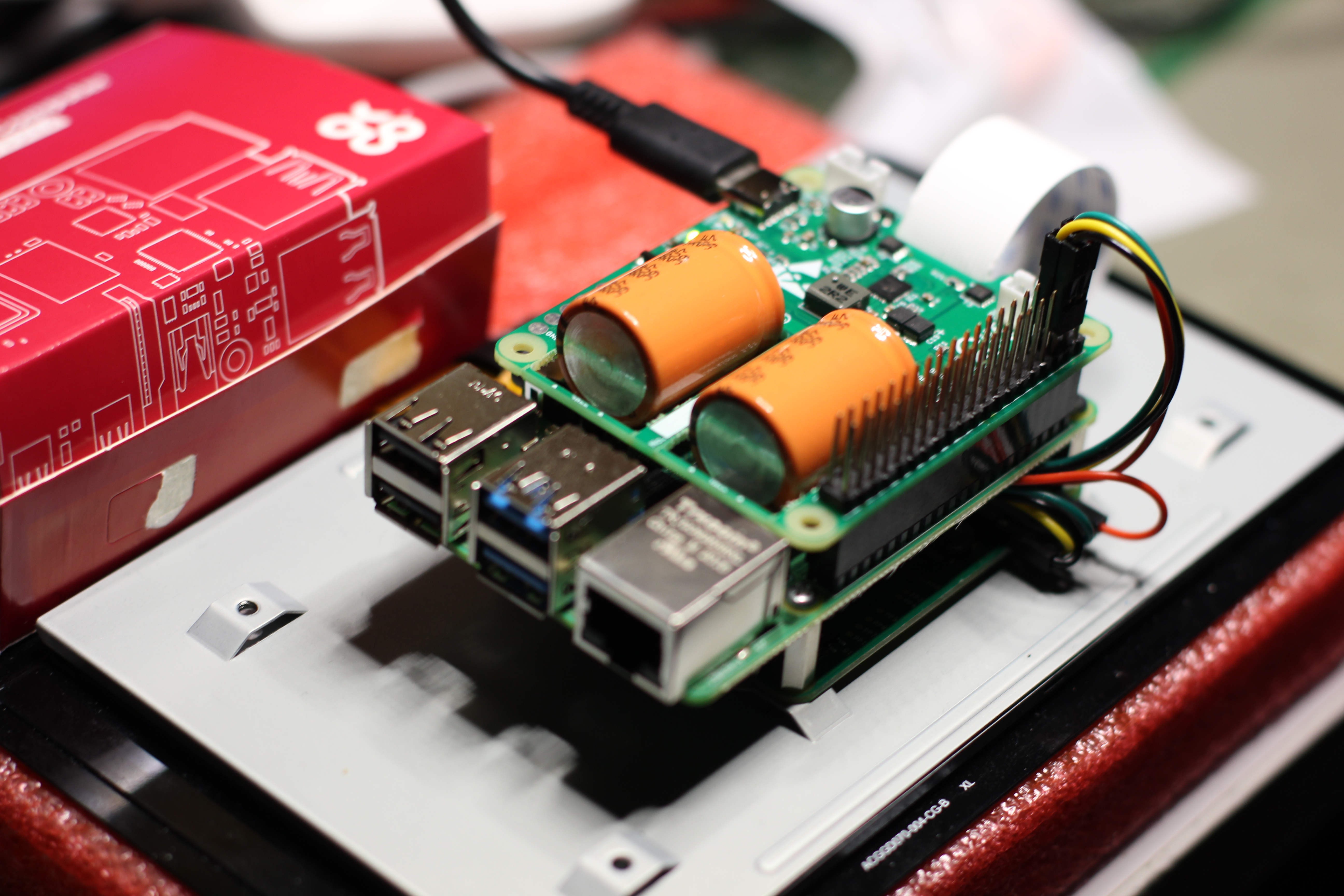-
Nice article on the quality of commericial available USB power supplies and cables
05/25/2021 at 10:01 • 0 commentsSimilar results compared to my research:
-
Power supply issues user feedback
05/23/2021 at 22:04 • 1 commentToday I got feedback of another user using a power supply other than the official raspberry pi USB-C PSU. In the end it did not work and from the failure description "My unit does not work with any of the USB-C power supplies I have; a short time after booting, the yellow LED starts blinking, indicating that the device has detected a voltage sag." it is clearly a PSU issue.
So if you want to use it, use it with the official PSU. There is so much rubbish on the market and the official PSU isn't that expensive.
I'm always interested in your experience with other brands of PSU. If you have one that works please post the barnd and its rating here.
-
Power Supply Nightmares again
01/28/2021 at 21:06 • 0 commentsI got feedback from some users that, depending on the load conditions powering up the Raspberry PI by connecting the USB connector sometimes is not working properly. I made several tests with different power supplys and finally I was able to reproduce the behavior.
![]()
The osciloscope view explains it best. Yellow is the voltage seen on the USB-C connector coming from the wall plug (scaling 1V/div). Blue is the voltage at the Raspberry PI pin 2 (+5V input) note the scaling is 1V/div.
What is happening here. The powersupply was connected and serves 5.1V. After approx 2ms the LTC4041 enables its DCDC to supply the Raspberry PI. In addition to that it also starts to charge the Supercapacitor with approc 1A of current. The output voltage to the PI is raising but the wall plug gets overloaded which results in a voltage drop below(!) the shutdown voltage limit of the PI. At this limit the LTC stops charging, the load current drawn from the wall plug is now reduced by 1A and it recovers. Then the voltage raises above the power fail limit and the story repeats and repeats and ...
Only the usage of a good powersupply with enough internal blocking capacitors can avoid this kind of problems.
-
USB-C supply wiring
12/14/2020 at 14:38 • 0 commentsSurvey on USB-C cables
I checked several USB-C cables concerning voltage drop.
I set my electronic load to 2A and switched the Supercap Pi USV on with charged capacitors.
Keep in mind that if they are empty, the charge current of 1A adds to the 2A!
This measurement again shows that the only good supply solution is to use the official Raspi 4 power supply.
Cable Type length Voltage drop Orzly® Neue Zertifizierte USB 3.0 Kabel (Amazon) 1m 340mV Xaomi Mi9T pro cable 1m 610mV USB Typ C Kabel, RAVIAD (Amazon) 0.5m 420mV USB Typ C Kabel, RAVIAD (Amazon) 3m 650mV Official Raspberry Pi 4 USB-C supply 1.5m -70mV (Voltage at USB-C connector
of the Supercap Pi USV was 5.07V) -
Replacement for the 35F Supercap
11/24/2020 at 17:37 • 0 commentsPerfect replacement for the 35F EATON Supercaps
Vishay has automotive qualified supercaps with 30F capacity.
AEC-Q200 Vishay 225 EDLC-R SuperCap, radial 30F -20 %, +50 % / 2.7V, Ø 18.5 Dia. x 27mm
Lifetime 500000 cycles, >10 years at 20°C.
![]()
They fit perfectly onto the board and do not interfere with LAN & USB of the Raspberry Pi.
-
Relay expansion board on OSHPARK
11/24/2020 at 11:19 • 0 commentsRelay expansion is available on OshPark for DIY
Raspberry Pi SuperCapacitor UPS with Power Switch
Powersupply for raspberry pi that includes an UPS, power button function and remembers its last state



